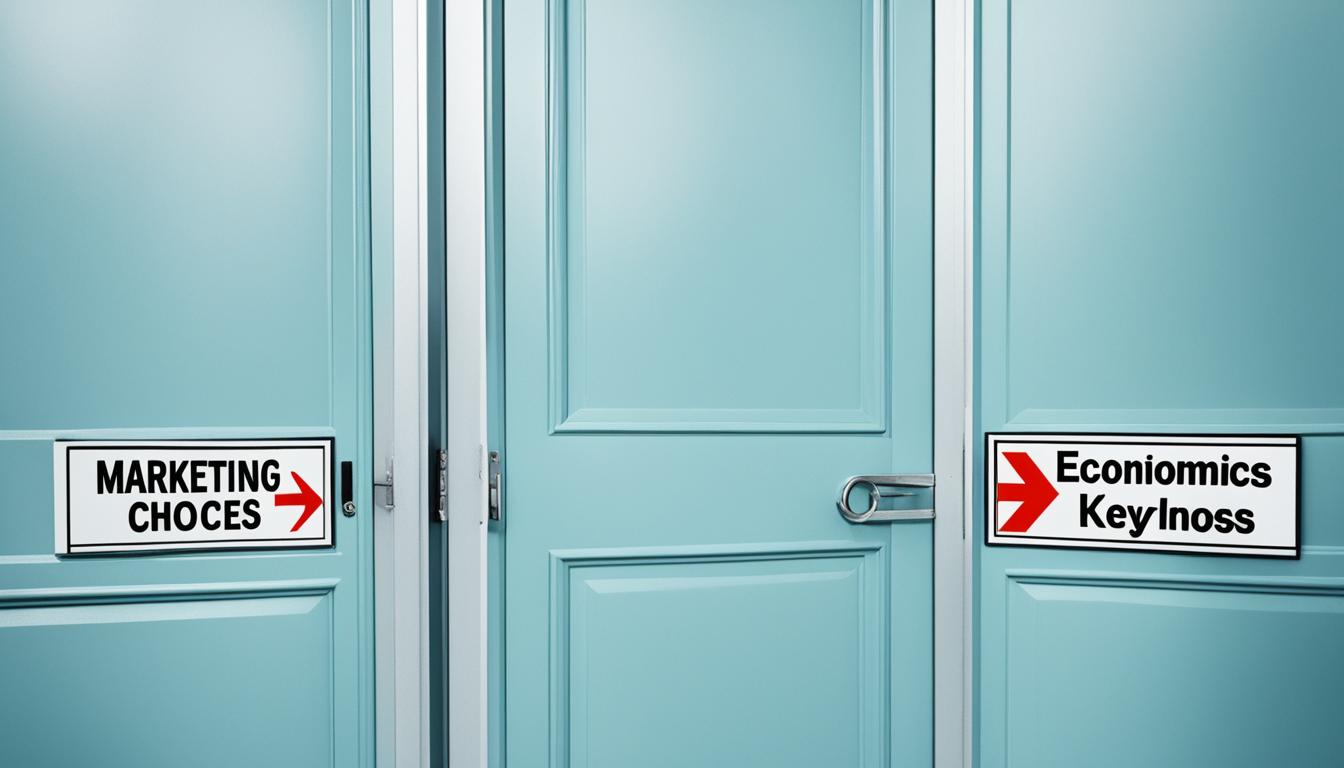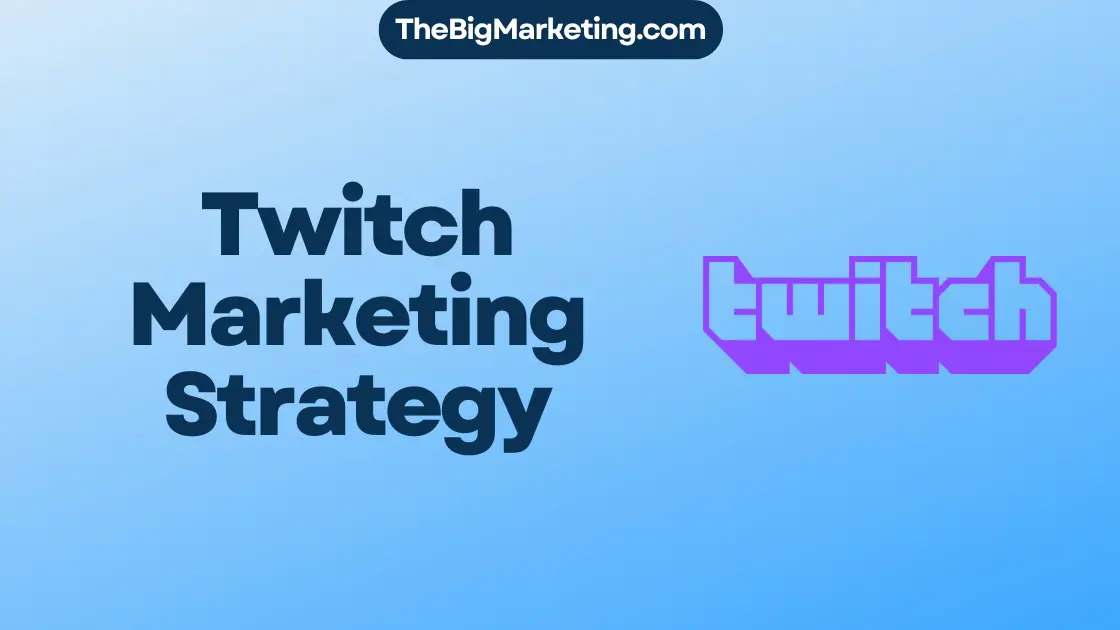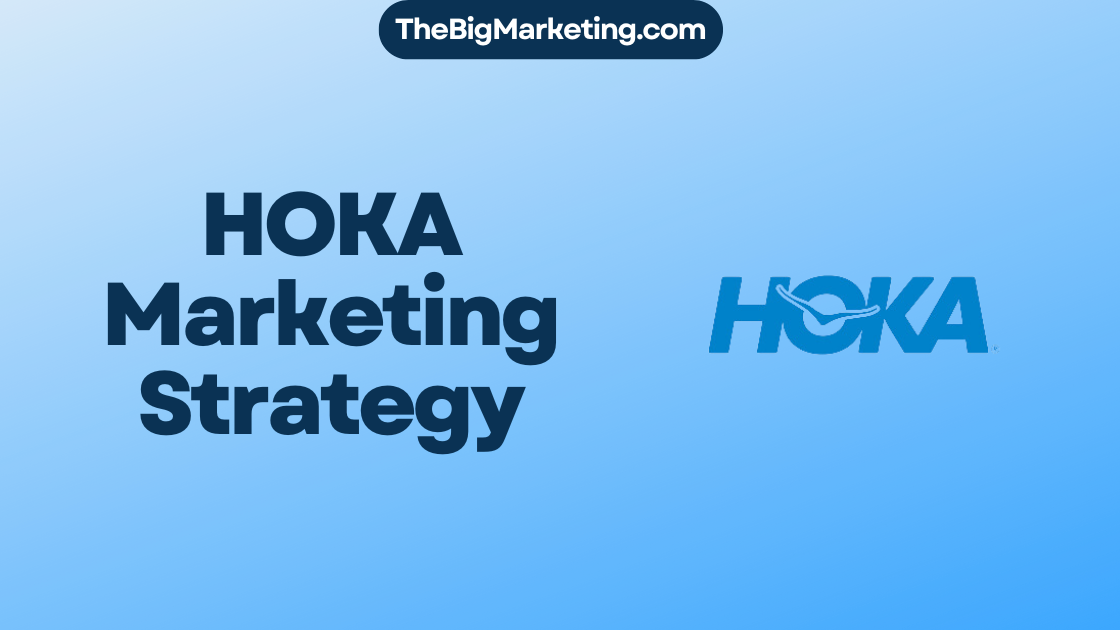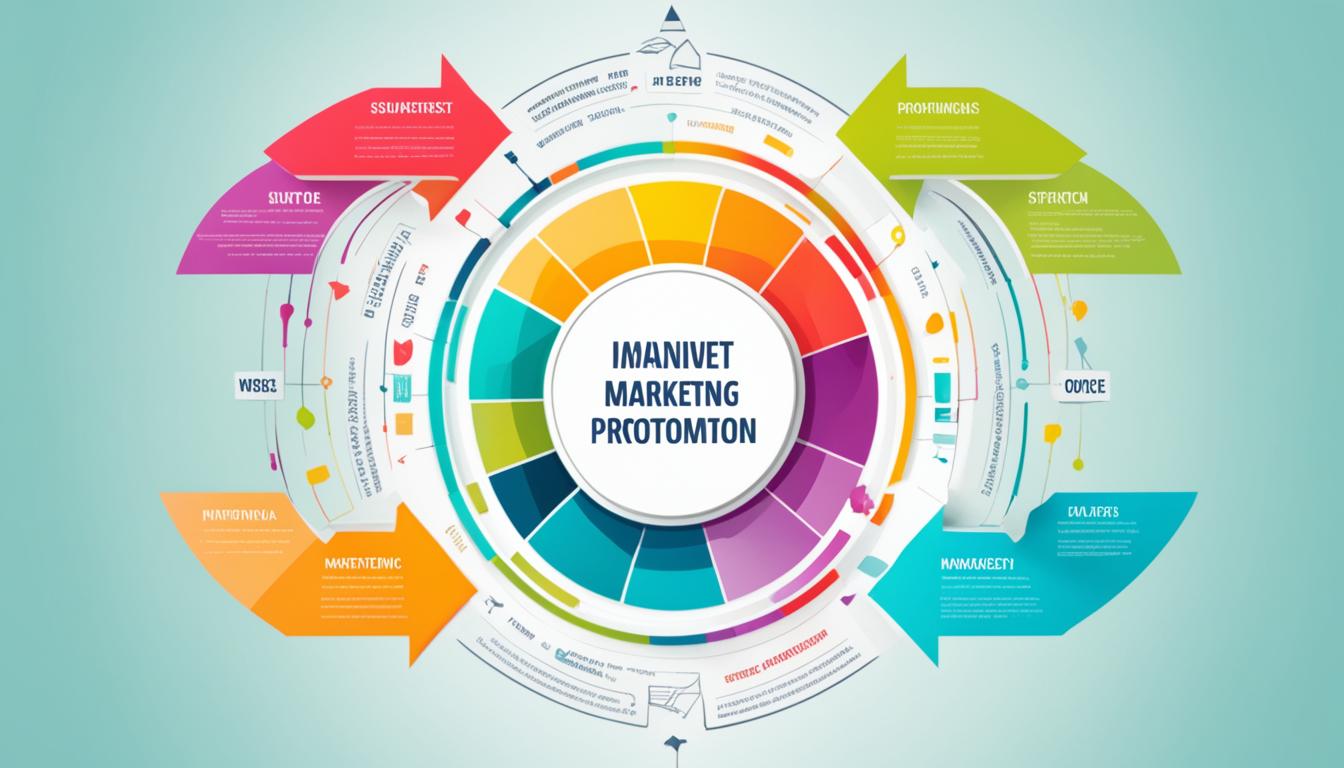HUL, also known as Hindustan Unilever, is a global leader in the consumer goods industry with a presence in over 190 countries. As part of its marketing strategy for 2024, HUL has implemented a comprehensive approach that encompasses branding, digital marketing, and market positioning. In this case study, we will delve into the specifics of HUL’s marketing strategy and explore how the company plans to stay ahead in an increasingly competitive market.
Key Takeaways:
- HUL (Hindustan Unilever) is a leading global consumer goods company.
- Their marketing strategy for 2024 focuses on branding, digital marketing, and market positioning.
- HUL aims to maintain its market leadership and drive growth through innovation and sustainability.
- The company leverages its extensive distribution network and innovative advertising approach to reach its target audience.
- With a commitment to sustainability, HUL aligns its business practices with responsible and ethical principles.
History of Unilever
Unilever, the parent company of Hindustan Unilever (HUL), has a fascinating history that dates back to 1885. Founded by William Hesketh Lever, Unilever has evolved into a global leader in the consumer goods industry. Its journey to success involved strategic expansions and acquisitions that have solidified its position in the market.
Unilever’s story began when William Hesketh Lever established Lever Brothers, a soap manufacturing company. Lever’s vision of bringing cleanliness and hygiene to households around the world paved the way for Unilever’s legacy. One of the most significant milestones in Unilever’s history was the merger between Margarine Unie and Lever Brothers in 1930, resulting in the formation of Unilever.
This merger marked the beginning of Unilever’s expansion and diversification efforts. With a wide portfolio of brands and products, Unilever continued to grow, acquiring various companies to strengthen its market presence. These strategic acquisitions allowed Unilever to enter new markets, expand its distribution network, and offer a broader range of products to its consumers.
Unilever’s commitment to growth through acquisitions can be seen in its acquisition of Best Foods in 2000, which led to the addition of well-known brands like Hellmann’s and Knorr to their portfolio. Another notable acquisition was Ben & Jerry’s in 2000, further enhancing Unilever’s presence in the ice cream category.
Unilever Acquisitions
Over the years, Unilever has made strategic acquisitions to strengthen its market position and diversify its product offerings. Some notable acquisitions include:
| Year | Acquired Company | Key Brands |
|---|---|---|
| 1930 | Margarine Unie | – |
| 1961 | Lever Brothers Pakistan | – |
| 1996 | Helene Curtis Industries | TRESemmé, Finesse |
| 2000 | Best Foods | Hellmann’s, Knorr |
| 2000 | Ben & Jerry’s | Ben & Jerry’s |
| 2010 | Alberto Culver | TRESemmé, VO5, Nexxus |
These acquisitions have played a crucial role in Unilever’s growth and expansion, allowing the company to strengthen its brand portfolio and cater to a wider consumer base.
Unilever’s Business Model
Unilever’s business model is built on several key pillars: consumer insights, manufacturing efficiency, logistics optimization, marketing effectiveness, and sustainability. By integrating these elements, Unilever strives to deliver consistent, competitive, and responsible growth.
One of the strengths of Unilever’s business model is its wide distribution network. With operations in over 190 countries, Unilever has established an expansive reach, allowing their products to reach consumers around the globe. This extensive distribution network enables Unilever to efficiently and effectively deliver their products to a wide range of customers, fueling their market presence and ensuring availability to consumers.
Unilever’s commitment to sustainability is another integral part of their business model. The company acknowledges the importance of addressing environmental and social challenges, and as such, they have implemented various sustainability initiatives. By focusing on sustainable practices throughout their operations, Unilever aims to minimize their environmental impact and contribute to the well-being of communities where they operate.
Moreover, Unilever’s business model emphasizes collaboration with governments and NGOs to drive positive change in society and the environment. By partnering with these stakeholders, Unilever can leverage their collective expertise and resources to tackle complex issues, such as climate change and poverty reduction. This collaborative approach strengthens Unilever’s ability to make a meaningful impact and create a sustainable future.
Overall, Unilever’s business model is designed to not only drive growth and profitability but also to prioritize sustainability and societal well-being. Through their distribution network, sustainability initiatives, and collaborative efforts, Unilever aims to be a responsible corporate citizen and contribute to a better world.
Unilever’s Distribution Network
Unilever’s distribution network is a critical component of their business model. With operations in over 190 countries, Unilever has established a vast and efficient distribution network that allows their products to reach consumers worldwide.
This extensive network encompasses various channels, including retail stores, e-commerce platforms, and wholesale distributors. By leveraging multiple distribution channels, Unilever ensures widespread access to their products, catering to the diverse needs and preferences of consumers.
Unilever’s distribution network is supported by robust logistics optimization strategies. The company continuously evaluates and streamlines their supply chain processes to enhance efficiency and reduce costs. By optimizing inventory management, transportation, and warehousing, Unilever can deliver their products in a timely manner, minimizing delays and ensuring reliable availability to customers.
Furthermore, Unilever’s distribution network plays a vital role in supporting their sustainability initiatives. The company is committed to reducing their environmental impact throughout the value chain, and this includes implementing sustainable logistics practices. By optimizing transportation routes, reducing emissions, and minimizing packaging waste, Unilever strives to ensure that their distribution operations align with their sustainability goals.
In summary, Unilever’s distribution network is a key enabler of their business model, enabling them to reach consumers globally while maintaining a focus on sustainability. Through efficient logistics optimization and a commitment to reducing environmental impact, Unilever’s distribution network supports their overall mission of delivering consistent, competitive, and responsible growth.
Unilever Products
Unilever offers a diverse range of products across various categories, catering to the needs of consumers in different aspects of their daily lives. With a comprehensive product portfolio, Unilever has established itself as a prominent player in the global consumer goods market.
Food
Unilever provides a wide array of food products that blend quality, taste, and nutrition. From savory sauces and condiments to ice creams and culinary ingredients, Unilever’s food brands offer a delightful culinary experience. Lipton, one of the leading tea brands worldwide, perfectly exemplifies Unilever’s commitment to delivering exceptional taste and quality in the food segment.
Home Care
Unilever’s home care products offer effective solutions for maintaining clean and hygienic households. Brands like Surf Excel, Vim, and Comfort provide laundry detergents, dishwashing liquids, and fabric conditioners, ensuring cleanliness and convenience in every home. Unilever’s home care products are designed to make daily chores easier and more efficient.
Personal Care
Unilever’s personal care brands cater to individuals’ grooming and personal hygiene needs. With renowned brands like Dove, Lifebuoy, Axe, and Lux, Unilever plays a significant role in the personal care industry. These brands offer a wide range of products, including soaps, deodorants, skincare items, and hair care solutions, ensuring that consumers can confidently maintain their personal well-being.
Refreshments
Unilever’s refreshments category includes beverages and frozen treats that provide refreshment and enjoyment. Brands like Cornetto and Wall’s serve delicious ice creams and frozen desserts that are loved by people of all ages. Lipton, a renowned tea brand, also falls under Unilever’s refreshments category, offering a refreshing beverage for tea enthusiasts.
Unilever Sustainable Living Brands
In addition to their wide product range, Unilever is committed to sustainability and responsible business practices. Unilever’s sustainable living brands focus on delivering both social and environmental benefits. These brands, such as Axe and Lifebuoy, align with Unilever’s commitment to sustainability and contribute to a more sustainable future.
| Product Category | Well-Known Brands |
|---|---|
| Food | Lipton, Knorr, Hellmann’s |
| Home Care | Surf Excel, Vim, Cif |
| Personal Care | Dove, Lifebuoy, Lux, Rexona |
| Refreshments | Wall’s, Cornetto, Lipton |
Unilever Branding Strategy
Unilever adopts a highly strategic approach to branding, ensuring that each brand within its portfolio maintains its unique identity while aligning with the overarching Unilever message and logo. This cohesive branding strategy allows Unilever to establish a strong presence in the market while providing consumers with a clear association of quality and trust.
One of the key strengths of Unilever’s branding approach is its strict adherence to brand guidelines. The company maintains consistent messaging across all communication channels, ensuring that the brand’s values and promises are effectively conveyed to its target audience. By upholding these guidelines, Unilever reinforces its brand image and creates a cohesive brand experience for consumers.
Unilever’s logo and messaging play crucial roles in its branding strategy. The iconic Unilever logo is instantly recognizable and acts as a visual representation of the company’s commitment to excellence and innovation. Each brand under the Unilever umbrella leverages this logo while incorporating its distinct visual elements that resonate with its specific target market.
Unilever’s messaging is carefully crafted to resonate with the values and aspirations of its target consumers. By tailoring brand messaging to specific audiences, Unilever ensures that its products connect with consumers on an emotional level, building long-lasting brand loyalty.
The use of consistent branding across all touchpoints helps consumers easily identify and differentiate Unilever’s products from its competitors. Whether it’s through packaging, advertising campaigns, or digital marketing, Unilever’s branding strategy creates a cohesive brand experience, reinforcing its position as a trusted and reputable consumer goods company.
Unilever Branding Approachand Guidelines
Unilever’s branding approach is underpinned by a set of clear and comprehensive brand guidelines that ensure consistency and alignment across all brands within its portfolio. These guidelines outline the specific visual elements, tone of voice, and messaging that each brand should adhere to when representing the Unilever family.
By providing brands with a set of branding guidelines, Unilever maintains control over its brand identity while allowing flexibility for individual brands to express their unique personalities. The guidelines address various aspects of branding, including logo usage, color palettes, typography, and visual assets.
This standardized approach to branding helps Unilever create a cohesive visual identity across its brand portfolio, making it easier for consumers to recognize and connect with its products. It also ensures that each brand’s positioning and messaging align with Unilever’s overall brand values, strengthening the company’s market position as a leader in the consumer goods industry.
In conclusion, Unilever’s branding strategy is a key driver of its success. The company’s cohesive approach, strict adherence to brand guidelines, and consistent messaging across all communication channels allow Unilever to effectively differentiate its brands in the market and build strong relationships with consumers. By maintaining a clear and recognizable brand identity, Unilever reinforces its position as a trusted and influential player in the consumer goods industry.
Unilever’s Advertising Approach
Unilever recognizes the importance of effective advertising in reaching its target audience and driving brand awareness. The company adopts a comprehensive advertising strategy that combines both traditional and digital mediums to maximize its reach and impact.
In response to evolving consumer behavior and preferences, Unilever has shifted its focus from traditional media platforms to modern ones like social media. By leveraging digital marketing channels, Unilever can engage with consumers in more personalized and interactive ways, enhancing their brand experience.
Unilever invests a significant portion of its budget in advertising and promotion to create impactful campaigns that resonate with consumers. This strategic investment allows them to craft compelling stories, showcase product benefits, and communicate their brand values effectively.
To illustrate the effectiveness of Unilever’s advertising approach, let’s take a look at some of the advertising mediums they employ:
1. Television Commercials
Unilever continues to utilize television commercials, understanding that it remains a powerful medium to reach a wide audience. By creating engaging and memorable commercials, Unilever captures viewers’ attention and builds brand recognition.
2. Print Advertising
In addition to television commercials, Unilever utilizes print advertising in magazines, newspapers, and other publications. This tactic allows them to target specific demographics and niche markets effectively.
3. Social Media Marketing
Unilever embraces the power of social media platforms such as Facebook, Instagram, Twitter, and YouTube. Through compelling content, influencer collaborations, and interactive campaigns, Unilever engages with consumers on a more personal level, encouraging brand loyalty and advocacy.
4. Content Marketing
Content marketing plays a crucial role in Unilever’s advertising strategy. By creating relevant and valuable content, such as articles, blogs, and videos, Unilever positions itself as an authority in its industry, while subtly highlighting its products and values.
5. Influencer Marketing
Unilever collaborates with influencers and online personalities to amplify its brand messages and connect with target audiences across various platforms. By leveraging the reach and influence of these individuals, Unilever can create authentic and relatable content that resonates with consumers.
6. Mobile Advertising
Recognizing the increasing prevalence of mobile devices, Unilever incorporates mobile advertising into its marketing efforts. Through mobile apps, mobile-optimized websites, and targeted ads, Unilever reaches consumers on their preferred devices, ensuring maximum engagement and impact.
Unilever’s advertising approach combines the strengths of traditional and digital mediums, enabling them to effectively communicate their brand messages and create a lasting impression on consumers. By staying attuned to evolving consumer behavior and preferences, Unilever remains at the forefront of advertising innovation.
Unilever’s Marketing Mix
Unilever’s marketing mix incorporates various elements, including product strategy, pricing, distribution, and promotion, to effectively meet consumer needs and preferences.
Product Strategy
Unilever offers a wide range of products to cater to diverse consumer requirements. From personal care and home care to food and refreshment, their extensive portfolio ensures that consumers have access to quality products from trusted brands like Dove, Lipton, Lux, and Knorr. Each brand under Unilever’s umbrella is strategically positioned to target specific market segments and fulfill unique customer demands.
Pricing
Unilever adopts competitive pricing strategies to provide customers with both affordability and value. By carefully analyzing market dynamics and understanding consumer price sensitivity, Unilever ensures that its products are accessible to a wide range of consumers. This pricing approach allows Unilever to maintain its market position while delivering products that meet the expectations of its target audience.
Distribution
Unilever boasts an extensive distribution network that spans across millions of retail outlets globally. This robust distribution system ensures that Unilever’s products are readily available to customers in various markets. By leveraging partnerships with distributors, wholesalers, and retailers, Unilever achieves broad market coverage, making its products easily accessible to consumers wherever they are.
Promotion
Unilever employs a combination of traditional and digital channels to promote its brands and engage consumers effectively. Through well-crafted advertising campaigns, Unilever maximizes brand visibility and creates customer awareness. The company utilizes various promotional tactics, such as television commercials, print advertisements, social media campaigns, and influencer marketing, to reach its target audience and build strong brand connections.
| Marketing Mix Element | Description |
|---|---|
| Product Strategy | Unilever offers a wide range of products from well-known brands, strategically catering to different market segments. |
| Pricing | Unilever adopts competitive pricing strategies to ensure affordability and value for customers. |
| Distribution | Unilever has a vast distribution network that reaches millions of retail outlets globally, ensuring wide market coverage. |
| Promotion | Unilever employs various traditional and digital channels to promote its brands and engage consumers effectively. |
Unilever’s Sustainability Initiatives
Unilever, as part of its commitment to sustainability and corporate social responsibility, has implemented a comprehensive range of initiatives. These initiatives align with the company’s Sustainable Living Plan and are integrated into its core business strategies and practices.
One of the key focus areas of Unilever’s sustainability initiatives is reducing environmental impact. The company has set ambitious goals to minimize its carbon emissions, water usage, and waste generation throughout its value chain. By adopting innovative technologies and sustainable practices, Unilever strives to mitigate climate change and conserve natural resources.
Furthermore, Unilever places an emphasis on improving livelihoods and promoting social well-being. The company believes in creating positive social impact by empowering communities, especially in regions where it operates. Through collaborations with local stakeholders, Unilever contributes to economic development, enhances livelihoods, and improves access to education and healthcare.
Unilever’s commitment to sustainability also encompasses sustainable sourcing of ingredients and materials. The company actively works towards ensuring that its supply chain adheres to ethical standards and promotes responsible agricultural practices. By sourcing sustainably, Unilever aims to protect biodiversity, support farmers, and promote fair trade.
Unilever’s Sustainable Living Brands
To further strengthen its sustainability initiatives, Unilever has introduced a portfolio of sustainable living brands. These brands not only meet consumers’ needs but also prioritize sustainable practices and societal benefits.
Unilever’s sustainable living brands include well-known products such as Dove, Lifebuoy, and Ben & Jerry’s. These brands are committed to reducing their environmental impact, improving social conditions, and promoting responsible consumption. By choosing products from Unilever’s sustainable living brands, consumers actively contribute to creating a more sustainable future.
In conclusion, Unilever’s sustainability initiatives demonstrate its dedication to corporate social responsibility and environmental stewardship. Through its Sustainable Living Plan and sustainable living brands, Unilever strives to make a positive impact on society and the planet. By integrating sustainability into its business strategies, Unilever sets an example for other companies and paves the way for a more sustainable future.
Unilever’s Market Positioning
Unilever, a global leader in the consumer goods industry, boasts a strong market position with a significant global market share. This market dominance is a testament to Unilever’s success in driving consumer engagement and meeting their diverse needs. However, it’s important to note that the company faces fierce competition from other major players in the industry, such as Procter & Gamble and L’Oreal.
To maintain its competitive edge, Unilever closely monitors its financial performance, including sales growth and profitability. This diligent monitoring allows the company to assess its market positioning and constantly refine its strategies to stay ahead of the game. By analyzing financial data and market trends, Unilever can make informed decisions to capitalize on opportunities and address challenges effectively.
Unilever’s Market Competition
In a highly competitive market, Unilever continuously strives to differentiate itself from its rivals. Through innovative product development, strategic branding, and effective marketing campaigns, the company aims to create a unique value proposition that sets it apart. Unilever’s commitment to sustainability and corporate social responsibility initiatives also contributes to its competitive advantage, as consumers increasingly prioritize ethical and environmentally conscious brands.
While competition may be fierce, Unilever’s established market presence, extensive distribution network, and strong brand equity provide a solid foundation for continued success. The company’s ability to adapt to changing consumer preferences and emerging market trends enables it to effectively navigate the competitive landscape and maintain its market share.
Unilever’s financial performance, coupled with its market positioning, reflects its ability to drive growth and provide long-term value to its stakeholders. By consistently delivering strong financial results, Unilever reinforces its position as a leading player in the consumer goods industry.
| Key Metrics | 2019 | 2020 | 2021 |
|---|---|---|---|
| Revenue (in billions) | €51.98 | €50.70 | €52.01 |
| Operating Profit (in billions) | €9.49 | €8.99 | €9.76 |
| Net Profit (in billions) | €7.37 | €6.64 | €7.80 |
Unilever’s consistent financial performance is a testament to its ability to generate steady revenue and maintain profitability, even in challenging market conditions. These figures further emphasize the company’s strong market positioning and its commitment to delivering value to its shareholders.
Conclusion
In conclusion, HUL’s marketing strategy for 2024 builds upon the rich history of Unilever and its commitment to sustainability. With a strong brand portfolio and innovative advertising approach, HUL aims to maintain market leadership and drive growth in the coming years. The company’s emphasis on sustainability and responsible business practices positions it well for future opportunities and aligns with evolving consumer preferences.
HUL’s marketing strategy is a case study in successfully leveraging its extensive distribution network and business model. By capitalizing on Unilever’s heritage and employing a forward-thinking approach, HUL has achieved remarkable success and garnered a significant market share. Looking ahead, the company is poised to seize future growth opportunities by staying true to its values and incorporating sustainability into every aspect of its operations.
As competition intensifies in the consumer goods industry, HUL’s marketing strategy case study serves as a testament to the importance of strategic brand management, digital marketing, and enduring commitment to sustainability. By continually adapting and innovating, HUL can navigate the dynamic market landscape, capitalize on shifting consumer trends, and position itself as a leader in the industry for years to come.





